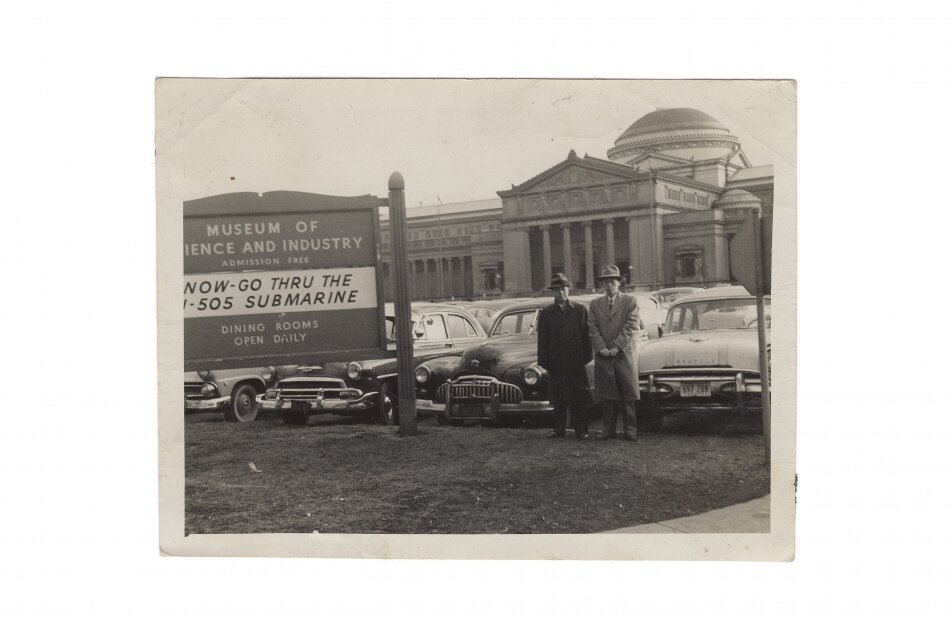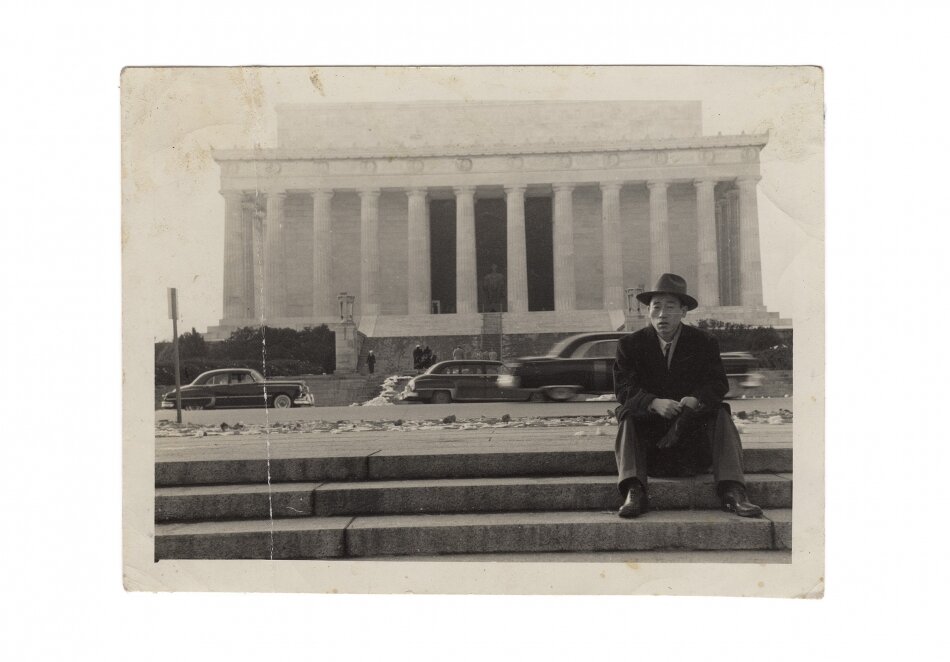Im Seyoung in America: 1955 to 1956 by Mikyoung Jun Pearce
Photomonitor UK | September 2017
Im Seyoung in America: 1955 to 1956 by Mikyoung Jun Pearce presents photographs from a journey that Im Seyoung made in 1955 from Seoul, through Tokyo to America. The entire project is based on a photo album of 184 photographs Pearce found in a flea market in Seoul in 2013. The images together with travel posters and the texts reinforce a vision of archives not as fortified sources, but as a subject; a system of relation between the said and unsaid.
The photographs chronicle the life of a young Korean man, Im Seyoung, from the 1930s to the 1970s, a period that took in Japanese occupation, World War II, the Korean War and the post-war rebuilding of the country. In the album, memories are selected and arranged, from school days to youth to middle age, against the backdrop of one of the most tumultuous periods in Korean history.
The 28 photographs in this exhibition show the time Im Seyoung spent in America as a stranger in a land he had seen only in movies. The images are treated as evidences of his life; the texts as the artist’s journey through his life. The images provide a fascinating glance into both Im Seyoung’s life and this unique period of American and Korean history.
Why are we looking back? The contemporary art panorama is characterized by an increasing obsession with the past and the physical objects in which it materializes. Archives, old photographs, found-footage, abandoned items, obsolete technologies, debris of interrupted lives, feature more and more frequently as a catalyst of and focus for artistic expressions.
Looking at Mikyoung Jun Pearce’s project, a new hybrid figure has emerged: the artist-as-historian. Re-writing Im Seyoung’s history from Pearce’s perspective is only one version of a story that could have unfolded in many other ways.
What really characterizes Pearce’s research is not the historical content of her works, but the modus operandi she employs. The places and instruments traditionally related to historical studies, the archive, the historiographical survey and the museum display, have become a repository of ideas, prompts and even formal and aesthetic models for art making. A nostalgic lens in this project leads us to an attempt to recover a mode of contemplation outside the universe of simulation, high-speed information and cable networks; to claim some anchoring space in a world of threatening heterogeneity, non-synchronicity and informed overload. The past becomes a new mooring in an age of uncertainty and digital transition.
As the artist’s research evolves she drives us, with the help of the text, into a deeper and wider investigation of Im Seyoung’s travelling through the United States. Looking through the lens of an avid detective, Pearce creates a precise context and at the same time a poetic space for the viewer. A photograph, separated from its context, reveals just a fragment of a narrative. When accessing an archive, especially one of a personal nature from a perspective of an outsider, that fragment is not sufficient to reveal it as a whole: the narrative solidifies as more parts are added to the research, but, yet, it reveals just one of its potential directions. Im Seyoung’s album is a personal archive which unlike an institutional one, has an explicit narrative. But only explicit to those close to the person who shared it. There is an absence of the first person narrative; the performative act where Im Seyoung or a family member, the owner of this photo album explains the stories associated with images and points out the people in the images as a personal ritual at family gatherings. Reading these images without this ritual can almost feel disquieting. The spectator becomes a detective, a voyeur of someone’s life seeing glimpses through the windows but with vast gaps when they move into another room out of view.
The re-appropriation of personal photographs from Im Seyoung’s archive creates, through the artist’s intervention, a new taxonomy; the archive is considered as active and discursive system, imaginative, fluid and generative, destabilizing the traditional notion of archive as an inert repository. Each photograph – in Im Seyoung’s album – alone, isolated from the reason that made it come to life, cannot exhaust its possible connections. The archive is not passive; it gradually reduces and transforms the material that it preserves: the familiar becomes unfamiliar. This is true both in case of public as well as personal archives, such as, for example, a family album: what happens, what emotions are triggered, when the personal and living history of a family or a person becomes part of archive? As an artist, why does Pearce need to disturb the archive, to play, to push the archive around? The material objects, sooner or later, all become fossilised orphan objects, representative of death. Re-using them, re-ordering meaning, memory, narrative, and proposing new re-interpretations these objects can be made to trigger, seems the only way to stop them from being representative of death and loss, and nothing else.






